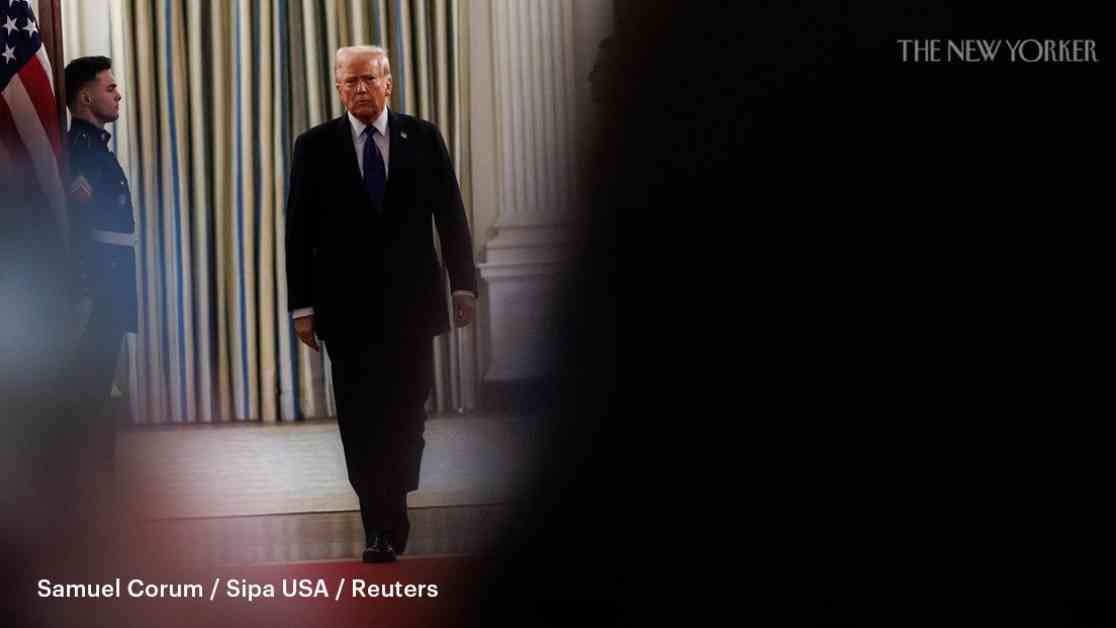On a chilling Wednesday evening in Washington, D.C., a tragic collision between an American Airlines jet and an Army Black Hawk helicopter near Reagan National Airport claimed the lives of sixty-seven individuals, including young ice-skaters. This heartbreaking incident set the stage for a press conference the following day with President Trump, who offered his condolences before veering into a controversial assertion linking diversity initiatives at the Federal Aviation Administration to the crash.
The President’s remarks, delivered in his signature style, highlighted his administration’s stance on diversity hiring practices within the FAA. Citing unsubstantiated claims from conservative media outlets, Trump implied that preferences for certain conditions in hiring had compromised safety standards. Despite lacking concrete evidence, he suggested a connection between the crash and diversity efforts, causing an uproar among critics and the public.
Unraveling the Anti-Woke Agenda
This incident was just a glimpse of a broader anti-woke agenda sweeping through the Trump Administration in its early days. New appointees wasted no time in rolling back diversity standards across various government agencies, emphasizing an “America First” approach. From preferential treatment based on marriage and birth rates to the suspension of critical programs like PEPFAR, the administration’s actions signaled a departure from traditional values and priorities.
As Trump’s executive orders continued to reshape the bureaucratic landscape, concerns grew over the lack of legislative focus and constitutional implications of his directives. The suspension of federal financial assistance programs under the guise of combating “wokeness” raised alarms among lawmakers and advocacy groups. The administration’s disregard for congressional oversight and legal boundaries led to accusations of a constitutional crisis, further fueling the debate over executive authority.
Grasping for Stability
Amid the chaos and confusion surrounding Trump’s policy shifts, questions arose about the long-term impact on critical services and vulnerable populations. The abrupt nature of these changes left agencies and beneficiaries scrambling for clarity and stability. While some measures were quickly reversed in response to legal challenges, the underlying message of anti-woke rhetoric persisted, underscoring a broader ideological shift within the administration.
The lack of a cohesive vision beyond anti-idealism and power dynamics raised doubts about the administration’s commitment to serving the American people. As Trump’s team struggled to articulate a clear policy agenda and faced criticism for questionable appointments, the fundamental principles of governance and public service came into question. The balance between merit-based governance and political expediency remained elusive, casting a shadow over the administration’s early efforts to redefine government priorities.
In the aftermath of the tragic plane crash and subsequent press conference, the true motives behind Trump’s anti-woke agenda came into sharper focus. Whether a strategic pivot or a misguided attempt to assert dominance, the administration’s actions reflected a broader trend towards dismantling established norms without a clear alternative. As the debate over diversity, meritocracy, and governance continued to unfold, the challenge of balancing competing interests and values remained at the forefront of the national conversation.
As the nation grappled with the aftermath of the crash and the subsequent political fallout, the need for thoughtful leadership and inclusive governance became more apparent than ever. Trump’s anti-woke agenda, while resonating with certain segments of the population, raised critical questions about the role of government in promoting equity, safety, and opportunity for all. In a time of uncertainty and division, the path forward required a delicate balance of pragmatism, empathy, and foresight to address the complex challenges facing the country.












